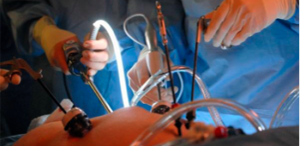
A healthy and successful recovery following bariatric surgery can open countless doors when it comes to new experiences or following through with activities you gave up due to health concerns. Whether it’s returning to work and exploring new professional settings or taking up hobbies in your free time, being at your best is essential for thriving in your new lifestyle.
One of the most important aspects of having a successful postoperative journey is exercise, since adding a workout to your daily routine, as well as a healthy diet, is key to ensuring that you don’t regain the weight that was lost after your bariatric surgery. It’s no secret that exercise has proven to show positive effects on a person’s overall health, both physically and mentally, regardless of their current weight or fitness goals. These benefits can be achieved through different types of exercise routines, such as weight training, cardio workouts, resistance training, or pilates.
Another goal some patients may have tends to be more oriented toward aesthetics rather than strength, and that can be seen when they start or retake the journey toward activities such as bodybuilding.
Bodybuilding is possible for patients to carry out, but it’s important to constantly communicate with your doctor or nutritionist so that you do so in a safe and effective way. Our multidisciplinary team at LIMARP® is equipped with the knowledge to help you reach your bodybuilding goals, from workout guides to diet plans, we want to make sure that you have all the necessary resources.
This article will focus on bodybuilding and how it can be achievable following bariatric surgery through hard work, consistency, and a balanced plan that prioritizes health and fitness.
Be sure to be mindful of your body and to not put your well-being at risk; in case of any emergency or if you’re experiencing unmanageable pain, contact your doctor as soon as possible.
A Deeper Look Into Bodybuilding
Bodybuilding differs from weight training and powerlifting in the sense that it primarily focuses on physical appearance instead of physical strength, and although it’s still competitive and has gained wide recognition over the years, it’s ultimately considered a lifestyle. In order to develop the muscle, or “build” it, one must focus on resistance training to maxify muscle hypertrophy.
Muscle hypertrophy refers to the increase of skeletal muscle by increasing the size of its component cells[1] and it can be achieved through strength and/or anaerobic training. There are two types of hypertrophy, sarcoplasmic and myofibrillar, and in bodybuilding, the former is favored because of its effectiveness when it comes to increasing muscle; while the latter is more useful for building strength.
Those who practice bodybuilding tend to stick to rigorous resistance training, as well as a very specific diet plan and a necessary amount of rest so that the body can recuperate between workouts.
The fitness plan that bodybuilders follow is intense in order to cause micro-tears to the muscle, and although this may sound painful, it’s the healing of these tears that encourage and increase muscle growth[2].
This muscle repair takes place during rest days and it’s recommended to rest 72 hours a week with an adequate amount of sleep when it comes to bodybuilding.
A specific diet is also vital for bodybuilding and those who are planning to begin their journey should expect lots of protein and supplements.
A bodybuilder goes through a process of bulking and cutting, which means increasing your calorie intake during a period of time before reducing it to lower their body fat without losing muscle mass. The amount of calories you need to consume can change according to your goals, as studies[3] have found that the “bulking and cutting strategy is effective because there is a well-established link between muscle hypertrophy and being in a state of positive energy balance”.
Bodybuilding After Bariatric Surgery
As we’ve mentioned before, bodybuilding is possible for people who have gone through any type of bariatric surgery, it will just take longer and the diet plan may be stricter according to the type of procedure that was performed. The amount of calories needed for body building may sound scary for someone who just underwent surgery to lose weight, but with the correct guidance and discipline, you shouldn’t worry about regaining what you lost during bariatric surgery.
So, where to start?
First of all, you must wait to get the green light from your doctor before carrying out any physical activity after recovering from bariatric surgery. The postoperative process looks different for every patient, but your surgeon may recommend that you wait at least six weeks before performing any strenuous activity and once they give you the go-ahead, they will advise that you start slow.
Try using light weights or bodyweight exercises before slowly incorporating heavier loads and progressively increase your resistance until you can fully follow a bodybuilding workout style.
It’s important that you listen to your body and to not push yourself to unbearable pain, you not only risk injury, but you can have negative side effects following your bariatric surgery. At LIMARP®, we have fitness experts that can help you in your bodybuilding journey and answer any questions about how to take care of your body.
You’ll also have to wait before starting any diet that’s recommended for bodybuilding, since what you can eat changes throughout your recovery process. It’s hard to integrate the necessary caloric foods when you’re on a liquid diet, but protein supplements can be of help during the time period where you can’t consume solid products.
Once you’ve reached that part of your recovery, we recommend that you get your protein from clean sources, which can also be known as clean bulking. Although this technique may take longer, it’s healthier because you don’t consume a lot of fat and this is ideal for bariatric patients that wish to begin their journey toward bodybuilding.
Clean bulking means having a diet with a moderate amount of carbs, moderate amount of protein, and a low amount of fats[4]. In order to gain the expected muscle required for bodybuilding, it’s necessary to reach the daily macronutrient intake in relation to the amount of exercise needed to increase the body’s muscle mass. Supplements can be a good option if you’re limited to certain foods, but be sure to speak to your nutritionist first so that they can recommend the right portions.
Until now, everything sounds good, but you’re probably wondering if there’s any downsides to bodybuilding after bariatric surgery, and while it is safe to do so, it can hinder the results from your surgery if you’re not careful with the process. Gaining weight after any bariatric procedure is possible, but the probabilities may rise if you exceed the calories in your bulk phase. Other side effects from the surgery, such as acid reflux, can also hinder your exercise routines because it can make working out uncomfortable or even painful.
You should contact your doctor if any type of pain becomes unmanageable or if you’re not seeing the desired results. It’s always best to be in touch with them so they can guide you in a safe way.
Contact Us to Learn More
If you’re interested in bodybuilding following a bariatric surgery, schedule an appointment with one of our doctors. We can help determine the right treatment for you. Contact us online anytime or give us a call at (619) 373-0229.
References
- [1] Baechle TR, Earle RW, eds. (2008). Essentials of strength training and conditioning (3rd ed.). Champaign, IL: Human Kinetics. ISBN 978-0-7360-5803-2.
- [2] MacDougall, J.D., Elder, G.C.B., Sale, D.G. et al. Effects of strength training and immobilization on human muscle fibres. Europ. J. Appl. Physiol. 43, 25–34 (1980). https://doi.org/10.1007/BF00421352
- [3] Schoenfeld, B. (2016). Science and Development of Muscle Hypertrophy. Pp. 139-140.
- [4] Giblin, Chris. “Clean Bulking: for Frustrated Hard-Gainers, Clean Bulking Is Attainable If You Focus Your Diet Accordingly with the Right Foods and Strategy.” Joe Weider’s Muscle & Fitness, vol. 75, no. 8, 2014, p. 89.


